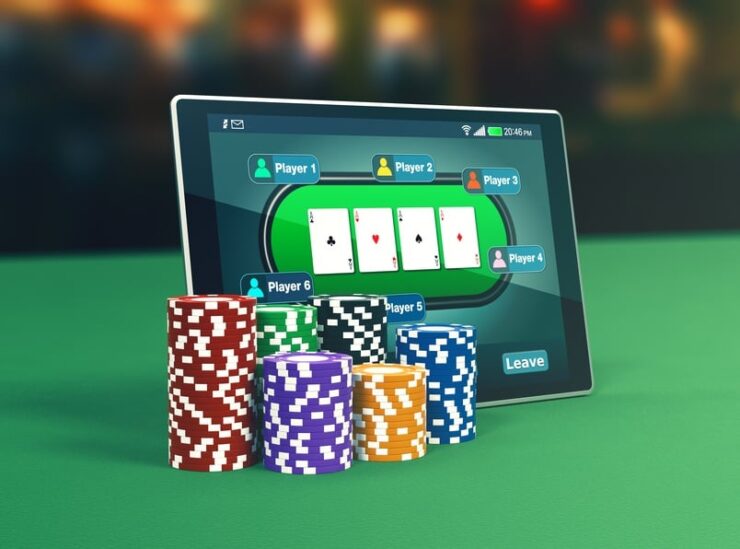Do you remember the last time you played a video game? Maybe it was just yesterday or maybe it’s been a while, but one thing is for sure – we’ve all experienced the thrill of leveling up, unlocking achievements, and earning rewards. What if I told you that these same elements are now being incorporated into gambling?
That’s right, gamblification is on the rise and it’s transforming traditional gambling as we know it. In large part, that is thanks to online casinos. Gambling platforms like SPY-casino are driving the industry forward and changing entertainment. In this blog post, we’ll take a deep dive into this phenomenon and explore how video game elements are changing the way people gamble. Get ready to level up your knowledge on gamblification!
Defining Gamblification

Welcome to the novel world of gamblification – a fascinating concept interweaving the thrill of video gaming with the rush of luck-based games. This term refers to the incorporation of video game elements into gambling platforms, engendering a fresh, engaging and immersive experience for players. From the inclusion of gaming narratives to the infusion of advanced mechanics, gamblification has been making waves in the gambling industry, creating a synergistic blend of interactive gaming and chance-based wagering.
Transforming the traditional gambling landscape, gamblification enhances player engagement through features such as levels, power-ups, quests, and achievements – features previously associated exclusively with video games. By marrying these video game hallmarks with gambling, casinos and game developers breathe new life into an industry often viewed as formulaic and repetitive, offering a compelling dimension to a game of chance, and thereby fostering a dynamic and captivating environment for players.
The Intersection of Video Games and Gambling
Gambling and video gaming may seem disparate, but their convergence results in a compelling, multifaceted experience. Video games hinge on players’ skills and strategy, imbuing them with control and agency. Conversely, these games often rely on luck, offering a different thrill – that of chance and uncertainty. The amalgamation of these two seemingly different realms results in gamblified experiences, affording players control over their actions while keeping the excitement of potential wins alive.
This intersectionality stems from a desire to make gambling more appealing to a younger demographic, namely the Millennials and Gen Z – cohorts who grew up with video games. As these groups became more central to the gambling market, industry leaders sought ways to engage them better.
Gamblification in Online Casinos

Online casinos have been at the forefront of gamblification, creating exhilarating experiences for their users. Such platforms have incorporated gaming narratives and themes into their gambling interfaces, transforming the mundane act of wagering into an immersive adventure. Players might find themselves exploring ancient pyramids in search of treasure while spinning slots, or crossing a mystical realm as they play a round of poker.
In addition, these casinos have gamblified the user experience by adopting the progression systems found in video games. Players can complete quests or achieve milestones to unlock bonuses or ascend levels, keeping them engaged and motivated. This gameplay loop – the cycle of challenge, achievement, and reward – fosters a sense of progression, enhancing the overall user experience and encouraging repeated play.
Incorporating Gaming Mechanics into Slot Machines
Slot machines, long the stalwarts of casinos, have not been left untouched by the wave of gamblification. Modern slot machines now boast video game-inspired graphics and narratives, making them more immersive and engaging. Instead of merely watching reels spin, players might be embarking on epic quests, fighting mythical beasts, or unearthing lost treasures, all while potentially winning money.
Moreover, many slots now integrate mini-games into their design. Triggered by certain combinations, they introduce skill-based elements to the traditionally chance-based slots. Players might find themselves shooting at alien invaders, solving puzzles, or navigating mazes – tasks that require skill and strategy. These engaging elements enhance the gaming experience, making it more dynamic and enjoyable, all while retaining the potential for financial rewards.
Loot Boxes and Microtransactions in Gaming

Venturing into the realm of video gaming, gamblification is discernible in the form of loot boxes and microtransactions. Loot boxes, purchasable in-game containers filled with random virtual items, have drawn comparisons to slot machines due to their chance-based nature. These mysterious containers offer players the anticipation and thrill of gambling, as the content is usually unknown and could be valuable or common.
Simultaneously, the use of microtransactions – small, optional purchases that enhance or extend gameplay – parallels the betting and payoff mechanisms seen in gambling. Players are tempted to spend small amounts of money to receive in-game benefits, potentially leading to a cycle of continual spending akin to gambling behaviors.
Gamification of Sports Betting
The gamification wave has swept over sports betting as well. In an attempt to attract a broader audience, sports betting platforms have started incorporating elements like leaderboards, achievements, and quests. Gamblers can now compete against each other for the top spot on leaderboards or unlock achievements for placing certain types of bets, adding a competitive gaming aspect to traditional betting.
Moreover, some platforms have begun to introduce fantasy sports leagues, blending the thrill of sports betting with the strategic elements of video games. Participants assemble virtual teams of real-life athletes, and their performance is determined by the statistical accomplishments of those athletes in actual games.
Skill-Based Gambling Games

One of the most innovative manifestations of gamblification is the emergence of skill-based gambling. This aims to blend the thrill of wagering with the player agency found in regular gaming, creating a unique and attractive proposition. Unlike traditional casino games that rely heavily on luck, skill-based games reward player expertise, strategy, and quick thinking.
Pioneers in this space have developed games that require players to navigate through virtual mazes, solve puzzles, or compete in arcade-style shoot-em-ups. The player’s performance directly influences their potential winnings, hence introducing a level of control previously unseen in the gambling world.
The Impact of Gamblification on Players
Gamblification’s rise has undoubtedly transformed the player experience, creating more engaging and interactive gambling and gaming environments. It has breathed new life into traditional gambling offerings, making them more appealing to a younger, gaming-savvy audience.
However, this intersection is not without its drawbacks. The amalgamation of gaming and gambling has raised concerns around problem gambling and addiction, particularly among younger, more vulnerable demographics. Policymakers, researchers, and industry leaders must work together to address these issues while capitalizing on the immense potential of gamblification.
Summary
Ultimately, with the rise of gamblification in gambling, we are seeing a shift away from traditional casino gaming and towards more interactive products that offer an entertaining experience for both casual and serious gamers. With innovative features such as special bonuses, leaderboards and achievements, these exciting new games also provide the potential for lucrative rewards if players use their strategies wisely. This mix of entertainment combined with potentially titillating payouts is sure to make sure that gamblification remains a popular trend in the years to come.

